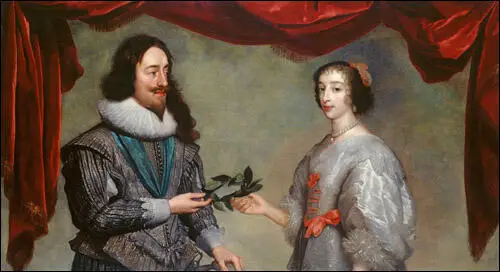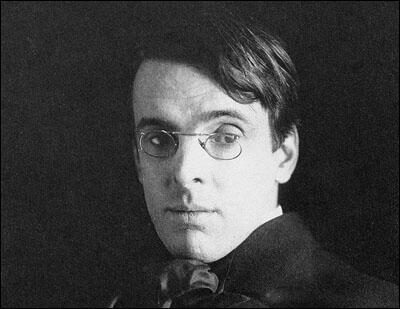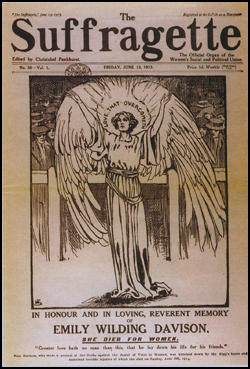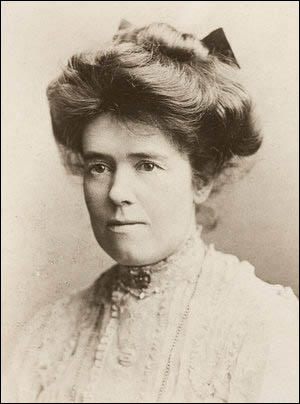On this day on 13th June
On this day 1525, Martin Luther married Katherine von Bora. She was one of 12 nuns Luther had helped escape from the Nimbschen Cistercian convent in April 1523, when he arranged for them to be smuggled out in herring barrels. She was a woman from a noble family who had been placed in the convent as a child. For the next two years she worked as a servant in the house of the artist, Lucas Cranach. According to Derek Wilson: "Catherine was comely (perhaps even plain); she was intelligent; and she had a mind of her own. She set her face against being married off to the first man who would have her.... At length a suitor was found who did please her. This was Jerome Baumgartner, a wealthy, young burger from Nuremberg. Sadly, Baumgartner's family persuaded him that he could do better for himself and a disconsolate Catherine was left on the shelf."
Martin Luther then tried to arrange for Katherine to marry Casper Glatz, a fellow theologian. She appealed to Nicolaus von Amsdorf and he wrote to his friend on her behalf: "What in the devil are you up to that you try to persuade good Kate and force that old skinflint, Glatz, on her. She doesn't go for him and has neither love nor affection for him." Catherine made it clear that she wanted to marry Luther.
On a visit to his parents, Luther's father asked him: how long was Martin going to go on advising other ex-monks to marry while refusing to set an example himself. On 13th June 13, 1525, Luther married Katherine. Hans J. Hillerbrand has argued that this decision was based on a number of factors. This included the fact that he regarded the Roman Catholic Church’s insistence on clerical celibacy as the work of the Devil.
Martin Luther explained his decision in a letter to Nicolaus von Amsdorf: "The rumour is true that I was suddenly married to Katherine. I did this to silence the evil mouths which are so used to complaining about me... In addition, I also did not want to reject this unique opportunity to obey my father's wish for progeny, which he so often expressed. At the same time I also wanted to confirm what I have taught by practising it; for I find so many timid in spite of such great light from the gospel. god has willed and brought about this step. For I feel neither passionate love nor burning desire for my spouse."
Even his fiercest critics admit that Luther' marriage to Katherine von Bora was a happy one. It is claimed that "Katherine proved to be a plain, frugal, domestic housewife; her interest in her fowls, piggery, fish-pond, vegetable garden, home-brewery, were deeper and more absorbing than in the most gigantic undertakings of her husband". (55) Over the next few years she gave birth to six children: John (7th June, 1526), Elizabeth (10th December, 1527), Magdalene (4th May, 1529), Martin (9th November, 1531), Paul (28th January, 1533) and Margaret (17th December, 1534).

On this day 1625 King Charles I of England marries Catholic princess Henrietta Maria of France. As she was a Roman Catholic, this marriage was not very popular with the English people. The Puritans were particularly unhappy when they heard that the king had promised that Henrietta Maria would be allowed to practise her religion freely and would have the responsibility for the upbringing of their children until they reached the age of thirteen.
The couple had six children, Charles (1630-1685), Mary (1631-1660), James (1633-1701), Elizabeth (1635-1680), Henry (1640-1660) and Henrietta (1644-1670). Sophia of Bavaria met Henrietta Maria in 1641. She later recalled: "I was surprised to find that the Queen, who looked so fine in the Van Dyck painting, was a small woman... with long skinny arms and teeth like defence works projecting from her mouth."

On this day in 1865 William Butler Yeats, the son of the artist, John Butler Yeats (1839-1922) was born in Sandymount, Ireland, in 1865. The family moved to London in 1867 and Yeats was educated at Godolphin School in Hammersmith.
In 1884 Yeats entered the Metropolitan School of Art in Dublin and at the Contemporary Club he met William Morris and John O'Leary, the Fenian leader. In 1885 his first poetry was published in the Dublin University Review. His first volume of verse, Mosada, appeared in 1886. He also edited and contributed to an anthology of Irish poets, Fairy and Folk Tales of the Irish Peasantry (1888).
Yeats returned to London and began to have his poems published in English and American magazines. His literary friends at this time included William Morris, George Bernard Shaw and Oscar Wilde.
In 1889 Yeats met and fell in love with the Irish nationalist, Maud Gonne. Later that year he published The Wanderings of Oisin and Other Poems. This was followed by John Sherman and Dhoya (1892), the play The Countess Kathleen (1892), a collection of stories and legends, The Celtic Twilight (1893) and the drama The Land of Heart's Desire that was produced in London in 1894.
With George Moore Yeats helped establish the Irish Literary Theatre in 1899. Plays such as Cathleen ni Houlihan, with Maud Gonne in the title role, first appeared at this venue. In 1904 Yeats and J. M. Synge became joint directors of the Abbey Theatre in Dublin. Collected Works in Prose and Verse was published in 1906. Other work during this period included The Green Helmet and Other Poems (1910) and Responsibilities (1914).
Yeats did not take part in the Easter Rising. However, he knew several of the executed rebels and wrote Easter, 1916 in September of that year. This was followed by The Wild Swans at Coole (1919) and Michael Robartes and the Dancer (1921).
After the foundation of the Irish Free State he became a member of Irish Senate and in 1923 was awarded the Nobel Prize for Literature.
In 1928 Y. B. Yeats moved to Rapallo in Italy where he published The Tower (1928) and The Winding Stair (1933). William Butler Yeats died at Cap Martin in 1938 and was buried in Roquebrune, France. His coffin was disinterred and taken to Ireland in 1948.

On this day in 1913 The Suffragette newspaper pays tribute to Emily Wilding Davidson. "Miss Davison, who was completely unconscious, was taken at once to the Epsom Cottage Hospital. The shock of the injuries she had sustained was so severe that for some time it was not thought that she would rally at all. On Thursday afternoon her pulse was a little better, but it was evident that there was bleeding going on inside the skull from a fracture across the base, and from the injured brain. On Friday an operation was performed which gave great temporary relief, but the injured portion of the brain never recovered, and the heart and the breathing gradually failed."

On this day 1913 Votes for Women reports on WSPU bomb making case. On 30th April 1913 the police raided the WSPU's office at Lincoln's Inn House. As a result of the documents found several people were arrested including Rachel Barrett (editor of the The Suffragette), Edwy Godwin Clayton, Flora Drummond, Annie Kenney, Harriet Kerr (office manager), Beatrice Sanders (financial secretary), Geraldine Lennox (sub-editor) and Agnes Lake (business manager).
When he was arrested Clayton said: "I think this is rather a high-handed action. I am an extreme sympathizer with the Suffragette causes. What evidence have you against me?" He confirmed he had written the letter but refused to comment on the contents. The letter read: "Dear Miss Kenney, I am sorry to say it will be several days yet before I can be ready with which you want. I have devoted all this evening and all of yesterday evening to the business without success. Evidently it is a difficult matter, but not impossible. I nearly succeeded once last night and then spoilt what I had done in trying to improve upon it. By next week I shall be able to manage the exact proportions, and I will let you have the results as soon as I can. Please burn this."
During the trial Matthias McDonnell Bodkin read extracts from a document headed "Votes for Women" and underneath "YHB". Bodkin claimed that YHB stood for Young Hot Bloods. The label was derived from a taunt thrown at Emmeline Pankhurst in one of the newspapers, which ran: "Mrs Pankhurst will, of course, be followed blindly by a number of the younger and more hot-blooded members of the union". As a result of them being single women one newspaper described the Young Hot Bloods as "a spinsters' secret sect".
Bodkin claimed that the police seized a great number of documents, that showed according to Bodkin that Clayton "put his knowledge and his brain at the Union's disposal for the purpose of carrying out crimes and of producing the reign of terror in London." Receipts for money he had been paid by the union were produced in court.
The most incriminating evidence was a letter sent by Edwy Godwin Clayton to Jessie Kenney in April 1913 that was found inside a book on the 1831 Bristol Reform Riots. Bodkin said: "We did not know until these documents were seized at their offices that they had an analytical chemist in their service – a man who, as we know, written a secret letter which the vain folly of Miss Kenney causes her to leave in her bedroom. the letter he tells her he had been experimenting, and was on the brink of success. Clayton ended his letter: "Burn this letter."
Bodkin provided other documents written by Clayton. One document in Clayton's writing was headed "Various Suggestions" and read "Scheme of simultaneously smashing a considerable number of street fire-alarms. This will cause tremendous confusion and excitement and should be as especially a good idea. It should be at once easier and less risky to execute than some other operations". Particulars as to timber yards and cotton mills also followed, as well as a plan for burning down the National Health Insurance Office.
In his summing up Justice Walter Phillimore, remarked that it was one of the saddest trials in his experience of nearly sixteen years as a Judge. "How in morals and how in good practical sense could such things, if they be true be justified? It was said that great causes had never been won without breaking the law. That might be true of some cases; it was very untrue of others. If every recorded act of anarchy, then, as history proceeded on its long course, the human race would reach a position of absolute savagery, and the only chance of salvation would be the obliteration of memory."
During the trial, Rachel Barrett said: "When we hear of a bomb being thrown we say 'Thank God for that'. If we have any qualms of conscience, it is not because of things that happen, but because of things that have been left undone." Barrett was described by one of the prosecuting barristers at the trial as "a pretty but misguided young woman".
After an absence of an hour the jury found all the prisoners guilty, with strong recommendations for leniency of sentence in the case of the three younger women, Rachel Barrett, Geraldine Lennox and Agnes Lake. The Judge said: "I agree with you, gentlemen of the jury, in the discrimination which you have made between the younger and elder men and women… which I propose to show in their sentences: As I have said, I assume you have been animated through out by the best motives. It is not merely that some of you have committed organized outrages, but I am more concerned with the incitement that has been given to young and irresponsible women, whose actions are not always balanced by their reason to do things which you are sure to regret."
Rachel Barrett was sentenced to six months in prison but Annie Kenney was sentenced to eighteen months and Edwy Godwin Clayton got twenty-one months. Barrett immediately began a hunger strike in Holloway Prison. After five days she was released under the Cat and Mouse Act. Barrett was re-arrested and this time went on a hunger and thirst strike. When she was released she escaped to Edinburgh. where she was looked after by Dr Flora Murray.

On this day in 1942 Wernher von Braun demonstrates his V2 Rocket to Nazi leaders. The V-2 was first used in September, 1944. Like the V-1 Flying Bomb it carried a one ton warhead. However, this 14 metres (47 feet) long, liquid-fuelled rocket was capable of supersonic speed and could fly at an altitude of over 50 miles. As a result it could not be effectively stopped once launched.
Over 5,000 V-2s were fired on Britain. However, only 1,100 reached Britain. These rockets killed 2,724 people and badly injured 6,000. After the D-Day landings, Allied troops were on mainland Europe and they were able to capture the launch sites and by March, 1945, the attacks came to an end.

On this day in 1944 first V1 Flying bomb lands on Britain. In June, 1942, Germany began working on a new secret weapon. It was officially known as the F2G-76 but was also called Vergeltung (Retribution) as it was built in response to the mass bombing of urban areas in Germany.
British intelligence first became aware of this new weapon when on 22nd August, 1942, a Danish naval officer discovered an early test version that had crash landed on a small island between Germany and Sweden. The officer sent a photograph and a detailed sketch of the bomb to Britain and preparations began to deal with this new weapon that had the potential to win the war for Germany.
Military intelligence eventually discovered that the V-1 missile was being built at Peenemünde and in May, 1943, Winston Churchill ordered Operation Crossbow, a plan to destroy V-1 production and launch sites. Over the next few months over 36,000 tons of bombs were dropped on these targets.
The V-1 (also known as a flying bomb, buzz bomb or doodlebug) was a pilotless monoplane that was powered by a pulse-jet motor and carried a one ton warhead. They were launched from a fixed ramp and travelled at about 350mph and 4,000ft and had a range of 150 miles (240km). It was 8 metres (25 feet) long and had a wingspan of about 5.5 metres (20 feet).
Germany launched its new weapon from Pas-de-Calais on the northern coast of France, on 12th June, 1944. The first ten failed to reach the country but on the following day one landed in Essex. Over the next few months 1,435 hit south-east England. These attacks created panic in Britain and between mid June and the end of July, around one and a half million people left London.
Germany fired 9,521 V-I bombs on southern England. Of these 4,621 were destroyed by anti-aircraft fire or by RAF fighters such as the new turbojet fighter, the Gloster Meteor. An estimated 6,184 people were killed by these flying bombs. By August only 20 per cent of these bombs were reaching England.

